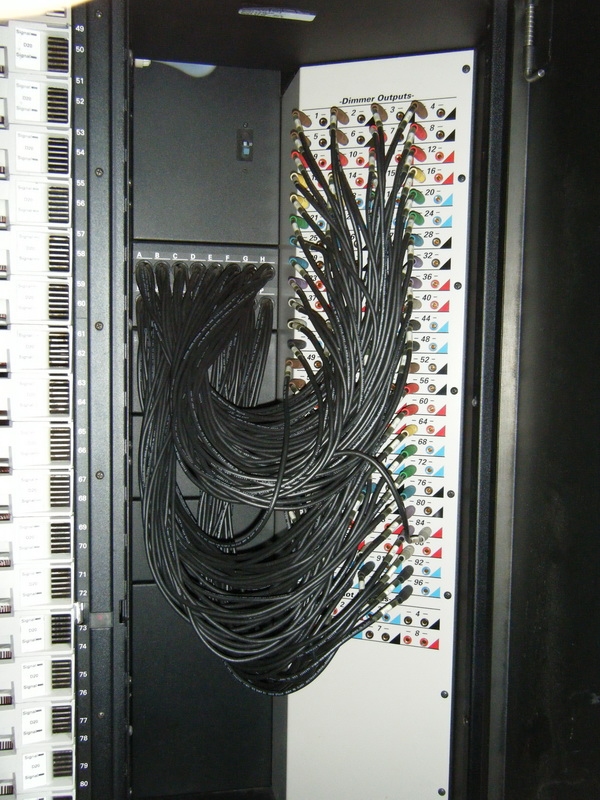Lighting Newb
Member
Hi, everyone. I've mostly worked as hand and ground rigger but I'd like to be a lighting tech so I'd love to learn more. So thank you for any insights.
I know how electricity works and the concept of forward phase-control dimming but I have no practical experience setting power distribution or dimmer racks. I've never had to deal with that in the roadhouses I've worked. Examples of how power branches off and how conventional are connected to dimmers would be great. Basically how to set up a lighting rig.
Correct me if I'm wrong but the way it works out in my head is that power feeds from a generator or company switch (for example one rated 400amps). Those three phases with cam lock connectors plug into a distro that's rated 400 amps 208/120 (or should it be 1600 amps?). That branches off using whatever receptacles are attached, like 200 amps in this distro:
https://m.4wall.com/rentals/8255862/motion-laboratories-120-208v-distro-48-way
to smaller distros and keep going until you get to a distro like a lunchbox that you can plug in L6-20 or edison's at 120v. Or take the saco connections on the distro and run 120 and 208v sacco and break-outs directly to the lights. The loads of all those branches should be 80% of what fed in, so 80% of 1200 amps. Is that right? Do any of the distros draw power even if there's no load?
My real question is how do you dim conventionals? I know dimmer racks are part of the equation. If you use this distro,
https://m.4wall.com/rentals/9758170/indu-electric-120-208v-distro-48-way , how do you connect the distro to the dimmers? Is it with dmx? And if it is, why not just make a home run to the console? Also, I saw someone messing with a dimmer rack like they were a telephone operator. What is that?
Thank you. I don't have much time at work to ask questions and get full answers so I appreciate any help.
I know how electricity works and the concept of forward phase-control dimming but I have no practical experience setting power distribution or dimmer racks. I've never had to deal with that in the roadhouses I've worked. Examples of how power branches off and how conventional are connected to dimmers would be great. Basically how to set up a lighting rig.
Correct me if I'm wrong but the way it works out in my head is that power feeds from a generator or company switch (for example one rated 400amps). Those three phases with cam lock connectors plug into a distro that's rated 400 amps 208/120 (or should it be 1600 amps?). That branches off using whatever receptacles are attached, like 200 amps in this distro:
https://m.4wall.com/rentals/8255862/motion-laboratories-120-208v-distro-48-way
to smaller distros and keep going until you get to a distro like a lunchbox that you can plug in L6-20 or edison's at 120v. Or take the saco connections on the distro and run 120 and 208v sacco and break-outs directly to the lights. The loads of all those branches should be 80% of what fed in, so 80% of 1200 amps. Is that right? Do any of the distros draw power even if there's no load?
My real question is how do you dim conventionals? I know dimmer racks are part of the equation. If you use this distro,
https://m.4wall.com/rentals/9758170/indu-electric-120-208v-distro-48-way , how do you connect the distro to the dimmers? Is it with dmx? And if it is, why not just make a home run to the console? Also, I saw someone messing with a dimmer rack like they were a telephone operator. What is that?
Thank you. I don't have much time at work to ask questions and get full answers so I appreciate any help.



